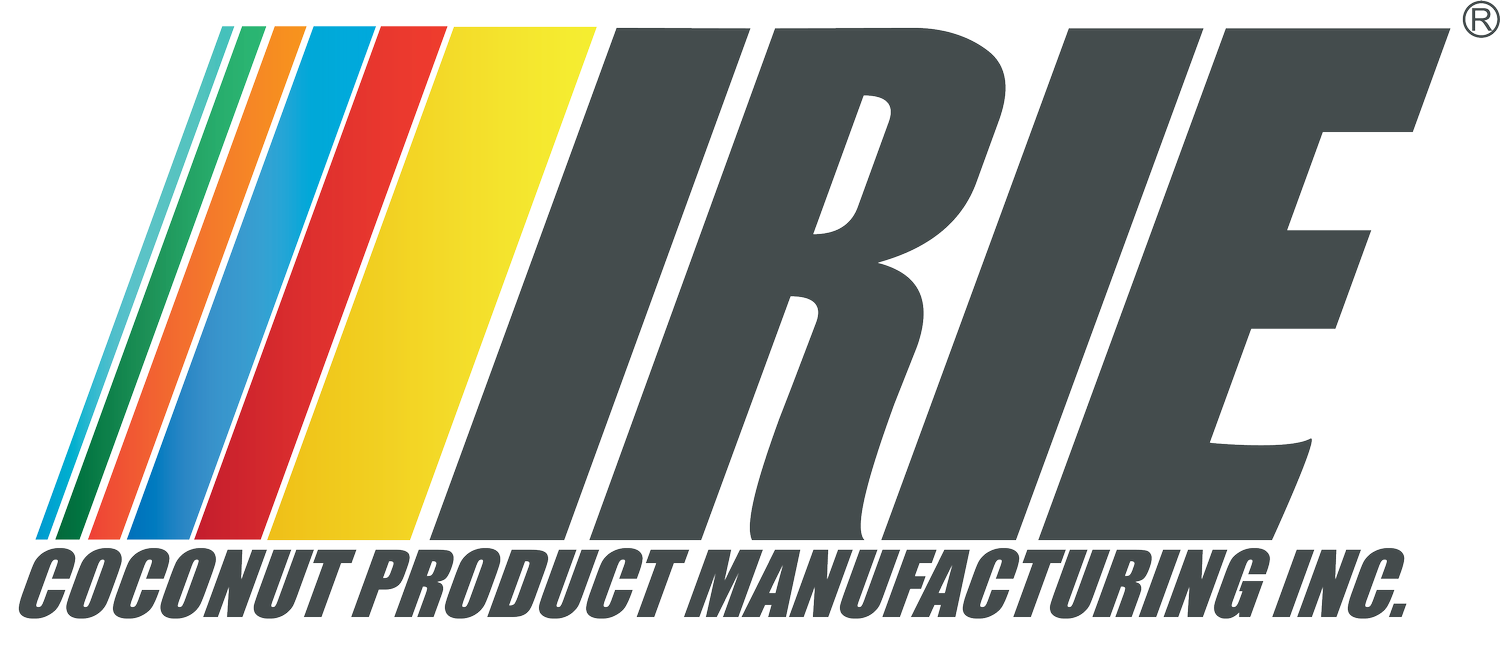COCONUT FATTY ACID DISTILLATES (CFAD)
WHAT ARE COCONUT FATTY ACID DISTILLATES?
Coconut Fatty Acid Distillates (CFAD) are the by-product of the physical refining of coconut oil. CFAD is used as a raw material for the manufacture of various products in several industries and will later be mixed with other ingredients to become a finished product that can be used for manufacturing such as soap, cosmetics, and food products.
HOW ARE CFADs MADE?
Coconut fatty acids are types of fatty acids derived from coconut oil using hydrolysis and distillation processes. CFAD 12-18 is recovered during the second stage in the distillation process after the hydrolysis stage. During the hydrolysis stage, RBD oil is mixed with water at high temperature and pressure conditions initiating the splitting process. The splitting process enables the formation of fatty acids and glycerol from triglycerides. The final product is a Long-Chain Fatty Acid Distillate consisting of C12 (Lauric Acid), C14 (Myristic Acid), C16 (Palmitic Acid) and C18 (Stearic Acid).
WHAT ARE THE DIFFERENT TYPES OF CFADs?
Dark amber-colored CFADs are typically made using crude coconut oil as the raw material or they can be a by-product of oil refining from other vegetable oils like palm, corn, canola, soya, olive, etc. Darker-colored CFADs usually contain contaminants and impurities that need to undergo further refining.
Our lighter-colored CFAD uses RBD (Refined/Bleached/Deodorized) Coconut Oil as the raw material and employs a fractionation process so the impurities and contaminants are already removed. Does not require further refining*. Further refining is possible as per client requirements.
APPLICATIONS AND USES
Some of the applications of Coconut Fatty Acid Distillate (CFAD) are as follows:
Soap making
Detergent / Laundry soap
Cosmetics
Lotions
Methyl ester
Biodiesel
Fatty alcohol
Anti-caking agent
It can also be used as an admixture for animal feed
Primarily CFADs are used as nonionic surfactants in various formulations both, industrial & cosmetic. These are also used as cleaning agents, wetting agents, dispersants or emulsifiers, softeners, and spin finishing agents in textile formulations.
It is often used as a raw material for soap making, detergent, shampoos, feed compounding, and oleochemical and biodiesel industries. Other common applications include rubber processing, candles, and cosmetic products or use as feedstock.
emulsifier
surfactant
degreaser
easy to dissolve in water
foam stabilizer
foaming agent
infiltration
It is a non-ionic surfactant, and it is especially obvious when the anionic surfactant is acidic. It can be compatible with a variety of surfactants and easily mix with other fatty acids.
INDUSTRIES WE SERVE
Coconut Fatty Acid Distillates (CFADs) is an extremely versatile product that can be compatible in many products that cover a broad scope of industries. The main industries we will cover are Chemical Industry, Personal Care & Cosmetics Industry, BIO-DEISEL, Leather & Textile Industry, and Animal Feed Manufacturers.
CHEMICAL INDUSTRY:
FUNCTION: Acts as a surfactant, cleansing agent, emulsifier, foam booster, foam stabilizer, foaming agent, and degreaser. Can enhance the cleaning effect in cleaning products.
The product can be widely used in the production and manufacture of water-soluble cleansing solutions, lubricating agents, parting compounds, soaps, detergent, shampoo, liquid detergent and can enhance the cleaning effect in cleaning products.
PERSONAL CARE & COSMETICS INDUSTRY:
FUNCTION: Used as an emulsifier and solubilizer in cosmetics & health care formulations.
There is a tremendous growing demand for bio-based eco-friendly products, particularly in the personal care & cosmetic industry. It not only boosts/stabilizes foam, and thickens liquid, but can also reduce irritation to the skin.
Assists in hydrating, minimizing wrinkles & fine lines, moisturizing, smoothening, and protecting skin from pollution and UV rays. Due to their high antioxidant, anti-inflammatory, anti-fungal, and anti-microbial properties, it is being used in body lotions, face creams, moisturizers, sunscreen, soaps, and others.
Acts as a cleansing agent, conditioner, emulsifier, and foam booster in soaps, baths, and hair care products and as an emulsifier for facial creams and lotions.
BIO-DEISEL INDUSTRY PART 1
Energy is a primary human need. This is an important key in economic sectors such as food, industry, transportation, agriculture, and power generation. Fuel and energy crisis and the concern of the society for the depleting world’s non-renewable energy resources led to a renewed interest in the quest for alternative fuels. Biodiesel is a liquid fuel similar to petroleum diesel (physical and chemical properties) in combustion properties, but essentially free of sulfur, making it a cleaner-burning fuel than petroleum diesel. Biodiesel is derived from renewable energy sources, such as vegetable oils and animal fats. However, biodiesel properties can sometimes be superior than that of petro-diesel fuel because the former has higher flash point, ultralow sulfur concentration, better lubricating efficiency, and better cetane number.
BIO-DEISEL PART 2
Both, non-saturated fatty acids contents of vegetable oils, such as: coconut oil, palm, soybean, rape-seed, woody oils and the like, can be converted into fuels. Coconut oil as other vegetable oils are com- pounds consist of various kinds of triglyceride fatty acids and about 90% are saturated fatty acid compounds. Coconut oil is rich in fatty acids (C8-C12), especially lauric acid and myristic acid. As a raw material it has advantages than other vegetable oils, it contains medium-chain fatty acids about 70% making it possible to obtain other fuels such as kerosene or jet fuel.
LEATHER & TEXTILE INDUSTRY:
Oils and fats are important additives in the fiber spinning and fabric manufacturing stages of textile fiber processing. While fatty acids from natural oils still play a role in textile processing, oxidatively stable synthetic oils have superseded their natural counterparts.
The textile industry is under pressure to reduce the amounts of or eliminate these additives, because of the environmental implications of the effluents. Recent developments to reduce the environmental impact of textile auxiliaries include the bio‐scouring process, which utilizes enzymes to catalyze hydrolysis of warp sizes and impurities in cotton; specialty surfactants developed to allow combining of desizing and scouring without the use of amylase; a biodegradable stabilizer incorporated into a hydrogen peroxide bleach bath to reduce the load on wastewater treatment facilities; and reformulated surfactants to replace alkyl phenol products that biodegrade to materials that are toxic to aquatic life.
CFAD is also developed for the lubrication of machineries of the textile and fibers manufacture industry. The main properties requested for textile oils are: colourless, anti-stain property to prevent deterioration of fibers and tissues in case of accidental contact and washability to allow its removal from the textile manufacture.
ANIMAL FEED MANUFACTURERS:
There has been much interest in the development of animal feed supplements designed to maintain immune function and growth in the absence of antibiotic feed additives.. Adding a feed or oil ingredient supplies the animal with essential fatty acids, needed for production and growth.
In recent years, replacing antibiotics in animal feedstuffs with biologically active substances has become a very current topic. The trend of banning the use of antibiotics, coccidiostats and other medical growth promoters in animal feedstuffs has developed because of fears these compounds contribute to the spread of bacterial resistance. Removing antibiotics from feedstuffs, after they were banned by the European Union (EU) in 2006, has put great pressure on livestock producers to find alternatives to antibiotics. Hence, modern feedstuff production is based on adding bioactive ingredients to feed, which should reduce the need for antibiotics and other medication, and positively influence animal health and welfare.
SOURCES:
https://www.mdpi.com/2076-2615/11/1/196/htm
https://www.allaboutfeed.net/animal-feed/feed-additives/animal-fat-nutritious-ingredient-for-animal-diets/
https://oilproducts.eni.com/en_GB/areas/lubricants/industrial-lubricants
https://iopscience.iop.org/article/10.1088/1755-1315/175/1/012025/pdf
https://www.sciencedirect.com/science/article/abs/pii/S0960148120316487










